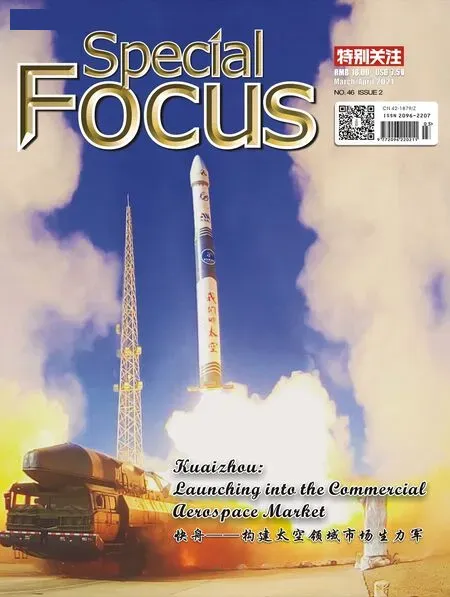The Xiaomi Way to Optimize Costs
小米公司在严抓产品质量上面,有两个有趣故事。
曾经一个阶段,我们对整个手机的元器件进行质量梳理,其中当然也包括成本梳理,结果发现一个问题——手机取卡用的那根顶针出了问题。
众所周知,那根顶针主要是为了方便用户装卸SIM 卡。平常,在捅这个卡槽时,用户用得最多的是别针,当然有些男士还用牙签。不管怎样,这种东西应该很便宜。曲别针都是按盒卖,一盒几百个,也就几元钱,一个算下来也就几分钱。
看到我们那根顶针的成本时,所有人都吓一跳:一元多人民币一根。怎么会这么贵呢?一定是哪里出了问题。
问题可能出在两个方面:一个是有人吃回扣,另一个是供应商太黑。
我们一直相信队友,有人吃回扣的可能性不大,那就问问供应商吧。
供应商其实也很紧张,尤其是知道这件事情是雷军亲自在抓。他们来到公司,当面解释道:他们其实基本不赚钱,因为这根针没什么利润。
一元多的顶针没有利润?这不是供应商惯用的伎俩吗?我们让他们解释一下,为什么一个曲别针几分钱,这根顶针却要一元多呢?供应商回答道:你们这根顶针厉害啊,里面含有几种稀有金属呢。
我们就更纳闷了,一根顶针含稀有金属干吗?供应商说:你们的产品有一个检验标准——插10 万次不能弯。
听到这个理由,我们所有人都惊讶了。这是什么标准?一根顶针,用户一般只用一两次,测试标准要10 万次,用户没事干去拿这根顶针捅10 万次手机?这不是瞎胡闹吗?
这还真不是供应商的问题。
我们请负责研发的同事一起研究这件事情,研发的同事也很委屈,当初我们开始做手机的时候,很多地方在学习苹果手机,很多地方采用的是苹果手机的标准,这根顶针就是按这样的标准生产出来的。
这个时候,我们的供应商补了一刀:苹果手机一开始确实是这个标准,后来因为太贵,就降低了标准;不过小米还是很厉害,你们几百元的红米手机用的也是这种顶针。
这一下,我们真的哭笑不得。
我们当然要追求极致,不过这种极致对用户没有任何意义,它是一种成本浪费。
和这根顶针的故事类似的是螺钉的故事。做手机的时候,手机主板与手机外壳需要12 颗小螺钉进行固定。由于手机很薄,那种螺钉很小。正常来说,这样的一颗螺钉也就几厘钱,但事实也接近1 元。这颗螺钉是工厂生产的时候拧上去的,不需要像顶针一样反复使用。这颗螺钉肯定有问题。
我们还是把供应商请到公司,大家一起研究哪儿出了问题。
由于小米抠细节出了名,供应商非常重视,这次过来带了很多工具,其中有一个放大镜。当我们询问为什么这颗螺钉那么贵的时候,供应商朋友拿着放大镜对着螺钉说:你们这颗螺钉真的很厉害,通过放大镜就能看到了。我们一起把头凑过去,供应商说:你们看到了吗?每颗螺丝钉表面都有一个小米的标识。我们所有人都惊呆了。这是什么天才的设计啊?这有什么用啊?我们的工程师把极致和智慧用在这个上面,显然是用错了地方。
Two interesting stories about the strict management of Xiaomi on the quality of the products are well known.
There was a time when we conducted a quality inspection of all the components of MIphones,which of course included cost controls,and we found something wrong with the SIM ejector pins.
These pins are used for the easy removal of SIM cards.But seeing as most people either lose the pin or don’t have it on them when they want to get the SIM card out,they often use paperclips as an alternative,and a few of them even prefer using toothpicks.Anyhow,the ejector pins shouldn’t be a costly thing,as a box of paperclips is sold at RMB merely a few yuans,which contains hundreds of paperclips in each box,so the cost of every single paperclip is only a few cents.
However,when we checked the cost of the ejector pins,everyone was floored by the fact that they cost over one yuan per pin.What was up with the extreme price difference? There must have been something wrong.
There might be two reasons behind it:one,someone in the company had taken kickbacks,and the other,we were being taken advantage of by our suppliers.
Well,we trusted our colleagues implicitly,so we ruled out the first contingency immediately.It was then that we contacted our suppliers.
Upon hearing the news,our suppliers were uneasy,especially when they learned that our CEO,Lei Jun was handling this matter personally.After arriving at our company,they said that they didn’t overcharge us at all,and there weren’t any profits to be made from the pins.
No profits from these bucka-piece pins? It seemed that the suppliers were just making excuses? Then I asked them why the cost of an ejector pin was over one yuan while that of a paperclip was only a few cents,and they told us,“Your pins are special because they contain several kinds of rare metals.”This answer puzzled us.Why should an ejector pin contain rare metals? And they responded,“Your test standard for the pin requires it to remain unbent after being inserted into the SIM tray 100,000 times.”
Upon hearing it,all of us were shocked.What an absurd standard! An ordinary user would barely use the pin a couple of times,yet the standard was set at 100,000 times.Who would insert the pin into their phone 100,000 times? It didn’t make a lick of sense.
And just like that,the mystery was unlocked.It wasn’t the suppliers’ fault.
We discussed the matter with colleagues from the R&D Center who felt a bit wronged.It turned out that when we first began making smart phones,we borrowed heavily from the iPhone in many ways,including Apple’s standard for mobile components,and the ejector pins were made accordingly.
Then our suppliers added tartly,“It’s true that Apple adopted this standard for the pins at the beginning.But later they lowered it due to cost controls.Xiaomi is such a topnotch company that you even use the high-quality pins on your Redmi Phones that are worth only several hundred yuan apiece.”
What funny logic!
Of course,we have to pursue perfection.But the blind pursuit of perfection like this simply leads to a waste of money,and is practically meaningless to the customers.
A similar story happened before about screws.When making mobile phones,the main board has to be firmly secured to the body by 12 micro screws.Because of the thinness of the phone,the screws have to be super small.Generally speaking,the cost for such a small screw should be no more than a few thousandths of a yuan,but the actual cost was close to one yuan.The screws are fixed into the phone during manufacturing,so they don’t need to be used repeatedly like the ejector pins.So something was definitely not kosher.
As usual,we invited the suppliers to the company to discuss the problem.
As Xiaomi has been well reputed for being its meticulous attention to detail,the suppliers took the matter very seriously,and brought lots of tools with them,one of which was a magnifying glass.When we asked about the high cost of the screws,they put the magnifying glass above one of the screws,and said,“These are incredible screws.You can see the trick through the magnifying glass.”
We bent forward immediately towards it,and the suppliers continued,“Did you see it? There is a Xiaomi logo on the head of every single screw.”
We were absolutely stunned.What a BRILLIANT design! But what was the point? It’s obvious that our engineers have wasted their talent,and this was simply another case of blind pursuit of perfection.
Upon reading the two stories,you’d likely think that we have an engineering crew of absolute airheads.In fact,it’s not their fault,as this is the common R&D problem for many companies.The relentless pursuit of perfection on the part of the engineers who only want to make great achievements at work,or create something that they’re proud of is beyond question.But if they forgot that their work is to serve the customers and create value for them,problems like these will just keep reoccurring.
Therefore,before making a product,it’s better to raise the cost-consciousness of everyone in the company,and conduct cost-conscious management throughout all the stages from planning,design to research and development.Once the design,product standard,or research and development of the product is finalized,the cost will be fixed.And then you need to analyze the cost at every stage and see if there is any waste in the cost that doesn’t serve the customers or bring them any extra value.And that’s how you get the optimal cost.
(FromI Am Making“Hot Cakes” at Xiaomi,CITIC Publishing House.Translation:Zhu Yaguang)
我相信,大家看到这两个故事时,会觉得我们的工程师太愚昧。其实,真不是他们愚昧,这是很多公司研发的通病。很多工程师总希望自己的工作能做出成绩,有值得炫耀的地方,可如果他们忘了所有的工作都是为用户服务,是给用户带来价值,这样的问题就总是出现。
所以打造一个产品,最好是从策划、设计、研发环节就注重成本,让公司每个人都有成本意识。一旦设计定下来、产品规格定下来、研发定下来,成本就基本固定了。我们需要梳理每一个环节的成本,看看是否存在大多对用户没用的成本,这样,产品成本就是相对最优成本了。
(摘自《我在小米做爆品》中信出版社)


